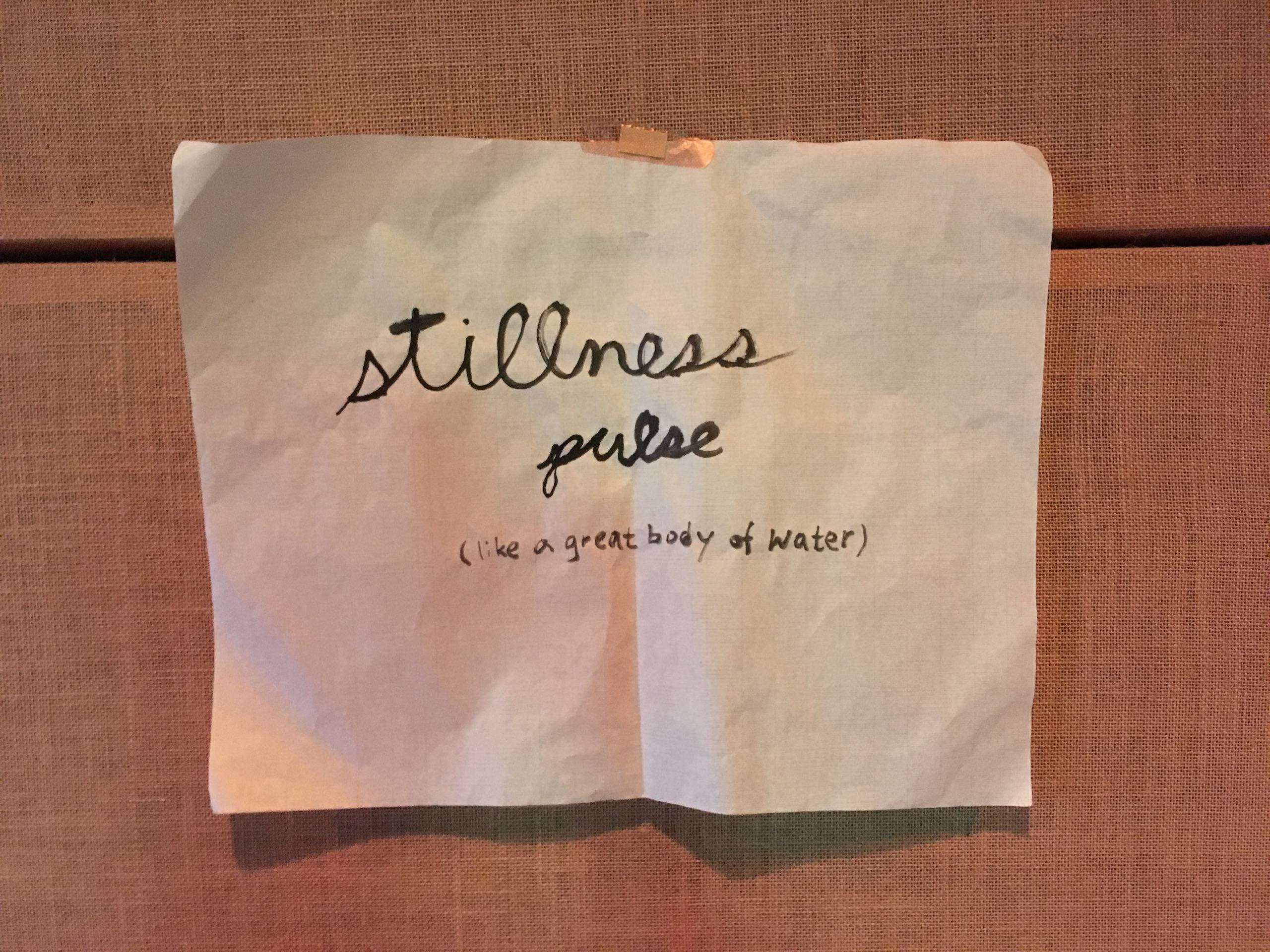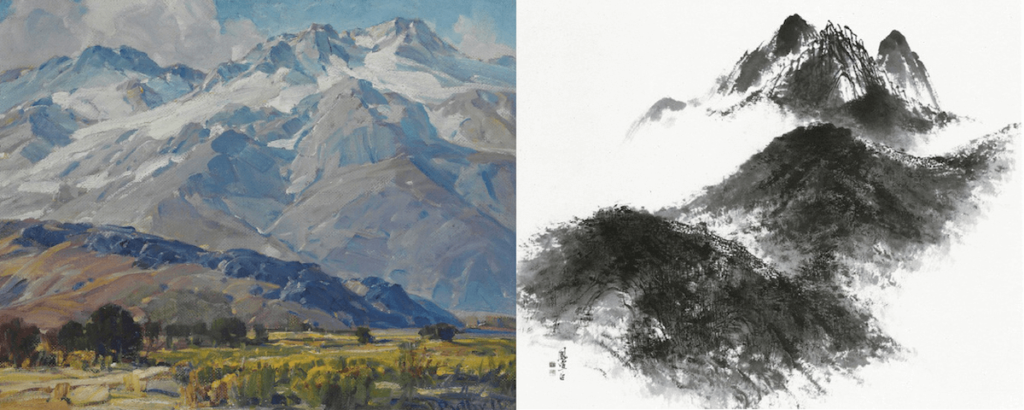04 Oct Dream of Home
Hello! I’ll be sharing a blog post weekly on each track off my album starting with the title track “Dream of Home” today. The posts will give a detailed look at the trajectory of each song and discuss what I learned.
The first line of the song “Dream of home, but don’t go back there” came to me on one of my night walks around a neighborhood park in Korea, where I was born and lived until the age of 8. I was back in Seoul for a couple years, ostensibly to learn to play gayageum, but my life revolved around family matters. While I had never wished to take up a lot of space before, it was the first time I found myself wishing I could disappear and I spent many an evening circling the park, counting the places in Korea I preferred to never set foot in again.
Beauty of space
The rest of the song came right out once I sat down with my gayageum and I put up a video recording here back in March 2017. The gayageum is a plucky instrument with little audible sustain but feeling the vibrations and hearing the microtones with the instrument in my lap, I hadn’t realized just how sparse it might sound to most. As we added additional parts to the voice/gayageum bones of each song, I learned that perception of space is relative, even between musicians. Ross—Ross Garren, long-time moss and album producer—kept suggesting that we add more to what he perceived to be bare arrangements while I thought it sounded plenty full and wanted to strip things away, if anything. But I soon came around to agreeing the solo arrangements would feel flat and severe on recording and we ended up at a good place where the arrangements were palatable to modern ears while preserving some of the beauty of space that is essential to Korean folk arts.
As we considered what to add to the tracks, I sent Ross a visual reference: two renderings of mountains, one by an American painter and one by a Korean painter. Neither tries to depict the landscape in a realistic way but they both capture the feeling you get from looking at mountains (though I think the Korean one does this more as is the intention in oriental ink art—to express the spirit, to capture the unseen—at least according to the one handout I’ve read on oriental ink art).
I wanted us to note the use of space in the Korean one, so that we could make the tracks feel more like the Korean and less like the American landscape. Not that filled-out/rich depictions are any less beautiful—it’s just that the “beauty of space” is a key part of what makes Oriental art different from the Occidental (this coming from a person who does not know much about the visual arts) and I wanted that in the album since the gayageum was an important piece in the project.
“Beauty of space” because space is so, so beautiful.
At the same time, I knew that between all the choirs (check out my jazz choir roots showing in the vocal backgrounds I mocked up in Garageband below) and instruments, we would not make the musical equivalent of the Korean painting. But the paintings still made for good visuals to keep in mind to help us find a happy place between the two contrasting approaches, reminding us to keep it feeling spacious, roomy, open.
Musical process for track “Dream of Home”
I had sent Ross rough audio clips of the songs on voice and gayageum, half of which were sung like a recitative, without a steady beat, and one of the first questions Ross asked was if I would be open to recording some of the songs to click (so that we can layer parts at the same tempo even if they don’t play live at the same time). We ended up recording every song to click, like a pop record. We tried “Dream of Home” at quarter note = 77 then boosted up the tempo some more clicks. I listened to this song a lot throughout the mixing/mastering process and it was interesting to hear how it would feel a completely different tempo depending on when I would listen to it: Sometimes I’d listen to it while lying down before falling asleep and it would sound like it’s racing by very quickly but then I would listen to it another time and it would sound normal.
This was the first song we worked on and tracked so we were still figuring out the best way to go about working on the music. We arrived at a process of me mocking up the song with voice, gayageum, background vocals, chords and other instrumental parts I thought should be dictated on my iPhone Garageband before our sessions downtown at Ross’ place then Ross orchestrating and fleshing it out more from there. I didn’t care too much about the specifics of the musical arrangements as long as we were true to the intentions of the story/lyrics (and kept the beauty of space) and Ross did a fantastic job navigating uncharted waters as the producer and co-arranger. While there are a number of gayageum-playing singer-songwriters in Korea, they typically use the modernized gayageum with 20-something strings that allows them to play all the notes on the piano, and we couldn’t find a precedent for an album like this using the traditional 12-string gayageum (which differs not only in the number of strings but the material the strings are made out of—silk traditionally) in a contemporary setting like ours, so we figured it out as we went.
Below is an audio clip of another approach Ross mocked up. While compelling, it didn’t capture the feeling I wanted so I said no.
Initially, we were planning on a solo EP with some light production then discussed adding a cello and other strings, but as the arrangements solidified and grew into a full band, we knew we had to call our old friends Nick DePinna (trombone) and Hitomi Oba (sax), in addition to Brandon Bae (guitar), who’s been like a little brother to me in my previous years living in LA, Gavin Salmon (drums & percussion), perhaps Ross’ longest collaborator hailing back to their middle school years, and Erik Kertes (bass), who, incidentally, went to the same high school as I did. We mocked up most of the parts for each song before going into the studio at our audio engineer Keith Armstrong’s house in North Hollywood, recording our respective parts layer by layer and then tracking the rest of the parts over several days with other band members. For the groove on this track, Ross mentioned exotica as a reference—and it was my first time learning about the genre—which feels not unlike a slow bossa in this case.
Capturing the essence
In tracking (aka recording the parts for real), I found that while we were focused on what sounded good musically, we were straying from the vibe I needed to retain in the song. I had articulated phrases to keep in mind for each song so the second day of tracking, I came back with the key phrase painted on rice paper (I had supplies from an oriental ink art class I once took and bombed). Having the phrase posted in the studio while recording worked well so I decided to paint the phrase for each song. Other than the pictured key words below, another phrase I doodled and relayed to Ross while arranging was “a nightmare that sounds like a dream.”

This song tied together themes that naturally emerged on the album and so it became the title track. I also have a music video for it which I’ll release online next month after I write about all eight songs. Next week, I’ll post on “Ruby, 6” along with a lyric video, so please check back for that, if you will.
___
Read my post on “Ruby, 6” next.
Find Dream of Home on YouTube Music, Bandcamp, Apple Music, Amazon, and Spotify.



No Comments